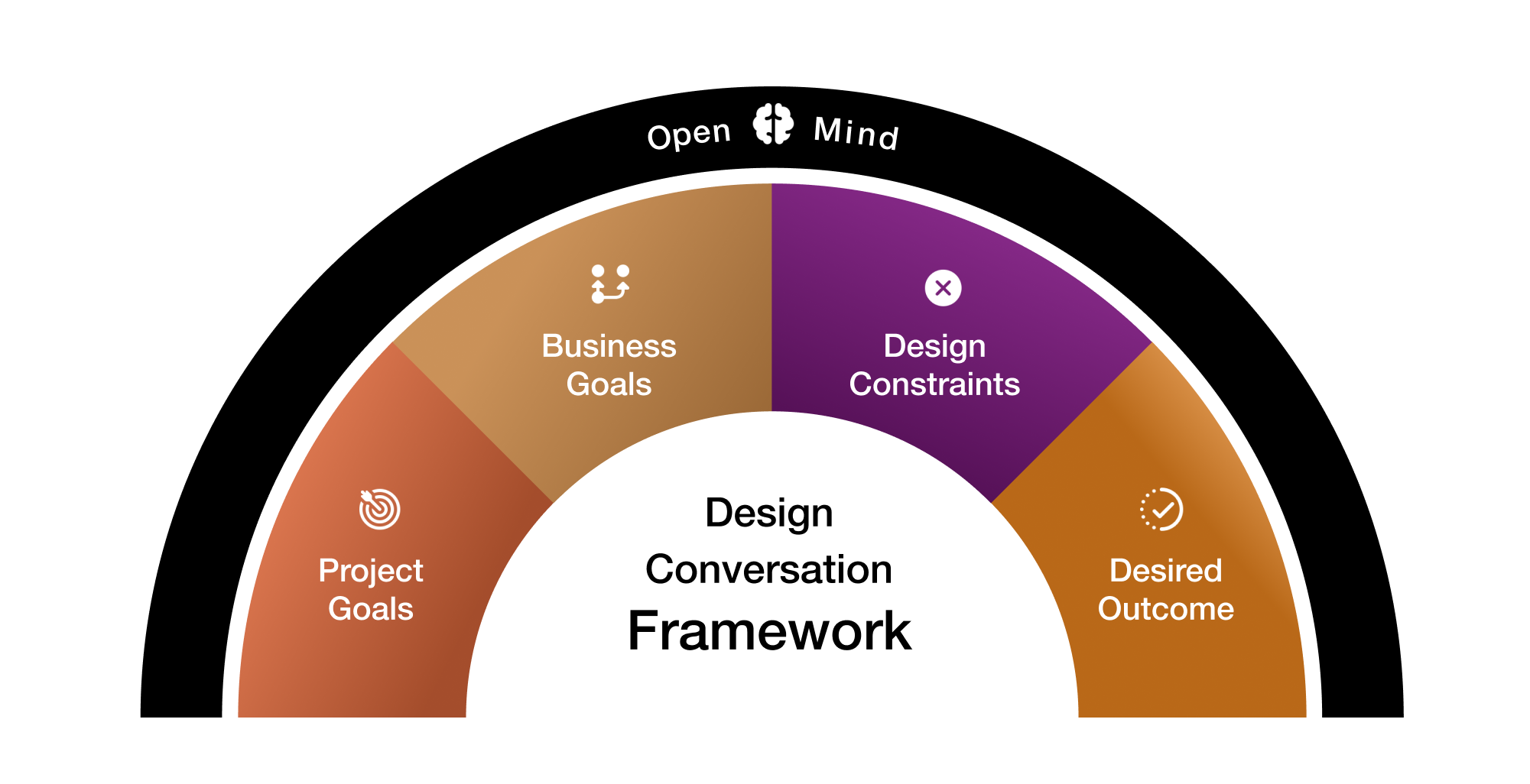Close the Gap Between the ‘Business’ and Designers
For organizations of any type and size, working with graphic and web designers can be a crucial aspect of your company's success. However, the collaboration process can often feel like navigating a foreign language, leading to frustration on both sides. To optimize your collaboration and achieve the best results, it's essential to approach the design process with a clear framework and an open mind.
Use the following Design Conversation Framework at the start of the process, and throughout, to communicate effectively with each other and ensure that business goals are met through impactful design.
1. Project Goals
The first step in any successful design collaboration is to define your goals. This means going beyond the specific design goals to include your brand goals, communication goals, and how they all tie back to your overall business objectives. The goal conversation should occur for each design project whether it’s a small graphic or a website rebrand. A great designer will help you bring these goals to life, however here are some jumping off points.
1.1 Design Goals
Clearly articulate what you want to achieve with the design. Are you looking to create a modern, minimalist website that showcases your products? Or perhaps you need a bold, eye-catching logo that sets you apart from your competitors. By defining your design goals, you give your designer a clear direction to follow.
1.2 Brand Goals
Your brand is more than just a logo or a color scheme; it's the personality and values that your company represents. When collaborating with designers, make sure to communicate your brand goals. What emotions do you want to evoke in your audience? What message do you want to convey? By aligning your design with your brand goals, you create a cohesive and memorable experience for your customers.
1.3 Communication Goals
Consider how the design will be used to communicate with your target audience. Are you looking to educate, inspire, or persuade? Your communication goals will influence the tone, style, and content of your design.
2. Tie It Back to Business Goals
Ultimately, every design decision should support your overall business objectives. Whether you're looking to increase sales, expand your customer base, or establish yourself as a thought leader in your industry, make sure to communicate these goals to your designer. By understanding how their work fits into the bigger picture, designers can create solutions that not only look great but also drive results.
Every design project is an opportunity to solve a problem. Be clear about the challenges you're facing and what you hope to achieve through design. Is your website difficult to navigate? Are you struggling to differentiate yourself from competitors? By identifying the specific problems you need to solve, you give your designer a clear focus and purpose.
3. Design Constraints
Just as important as knowing what you want is knowing what you don't want. Are there certain colors, styles, or design elements that don't align with your brand? Are there common pitfalls in your industry that you want to avoid? By communicating these "don'ts" upfront, you can save time and prevent misunderstandings down the line.
4. Desired Outcome
Finally, it's essential to have a clear vision of what success looks like. What do you want your customers to think, feel, or do when they interact with your design? What metrics will you use to measure the effectiveness of the project? By defining your desired outcome, you give your designer a target to aim for and a way to evaluate their work.
5. Embracing an Open Mindset
When collaborating with designers, all of the above should occur within the embrace of an open mindset. Remember, you hired a talented designer for their expertise in transforming qualitative guidance into stunning visual designs. While it's important to provide direction and communicate your goals, it's equally essential to give your designer the creative freedom they need to excel.
Avoid being too rigid or fixated on a specific look or design element (with the exception of meeting regulatory guidelines). Instead, trust your designer's ability to present innovative solutions that may surpass your initial expectations. By allowing them to think outside the box and explore various design options you open the door to fresh perspectives and potentially groundbreaking results.
Embrace the iterative nature of the design process. Be open to feedback and willing to consider alternative approaches. Your designer's unique viewpoint and creative problem-solving skills can lead to designs that meet your objectives and elevate your brand to new heights.

